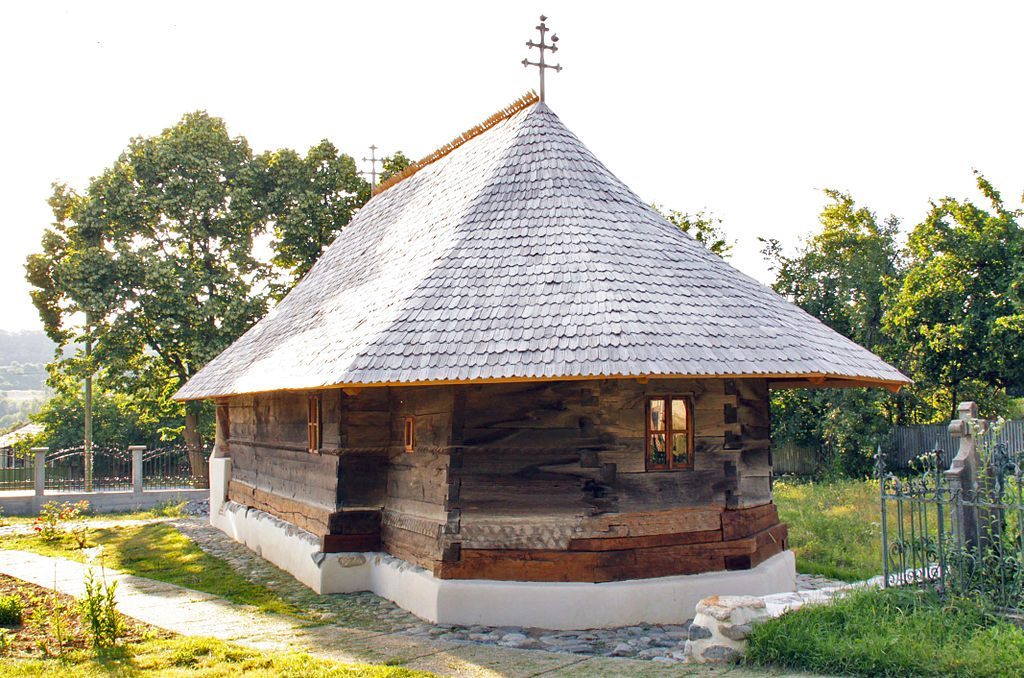

The church was built of wood on the bordered estate of Ion Negrescu. In 1833 and then in the years 1877-1879 was repainted, and with this occasion was built the porch, also. The cruciform plan, later adopted, symbolizes the sacrifice of Christ and the christian salvation, entering the church meant having faith. The church was painted inside by painters Dozasti Dozasti and Dozasti Ilie and 70% af the painting is still kept. The exterior was also painted, but the painting was lost almost entirely. The scrap within the vessel, both during the Byzantine era (7263 as well as today (1785), proves its existence. The church stands out especially by its simple and rustic construction, similar to a rural settlement, but precisely this element offers charm and spirituality to the abode. However, there are a few elements that stand out: the colored pillars at the entrance to the church or external details such as waist head from the left pillar or from the right one. Over the years, the church has undergone several changes, was renovated and painted. In 1833, it was built on foundation and was covered again, because in 1879 is added the porch wall. On the south wall in the church’s porch, we find beautifully painted the founders that renovated the abode, dressed in traditional costumes to celebrate. At the entrance to the nave is preserved an ancient religious exhortation “Who will enter inside this holy and Godly church, with an unclean heart, will not receive the heaven’s kindom. ”
Cungrea is a commune in Olt County, Muntenia region, Romania, composed of villages Cepeşti, Cungrea (residence), Ibăneşti, Miești, Oteştii de Jos, Oteştii de Sus and Spătaru.
According to the census conducted in 2011, Cungrea village population amounts to 2178 people, down from the previous census from 2002, when it had registered 2.644 inhabitants. Most inhabitants are Romanian (97.15%). For 2.85% of the population, ethnicity is not known. Regarding religious appartenence, most people are Orthodox (97.02%). For 2.85% of the population is not known the confessional belonging.
